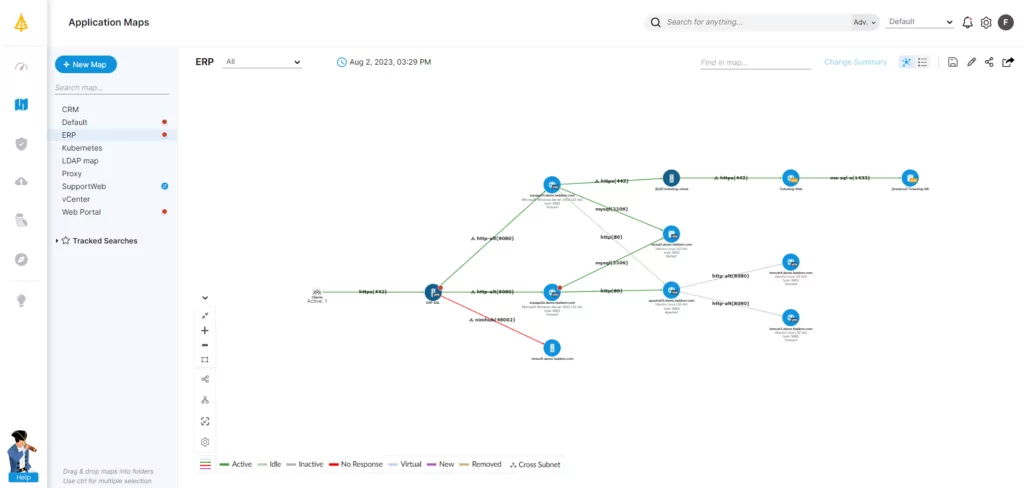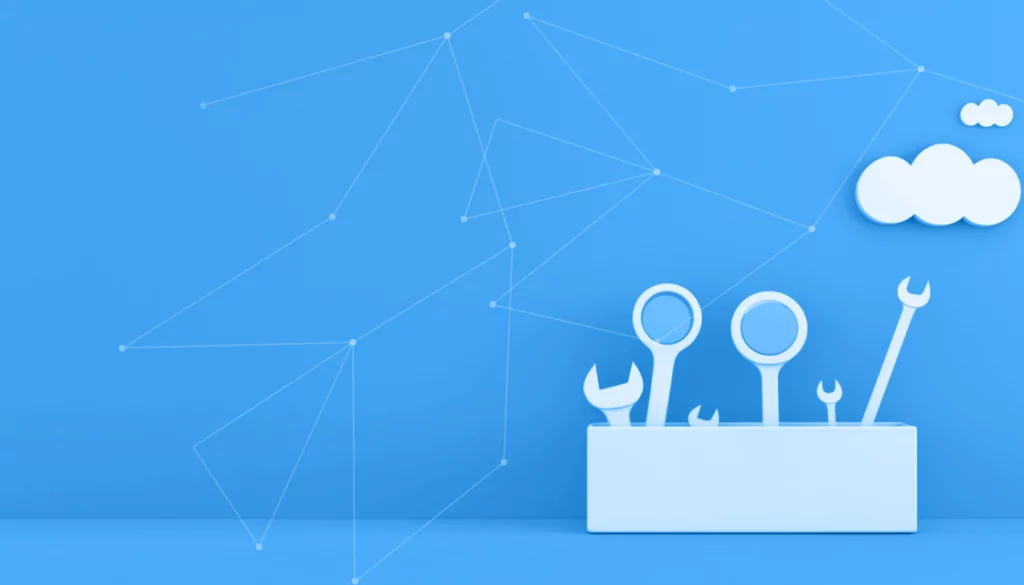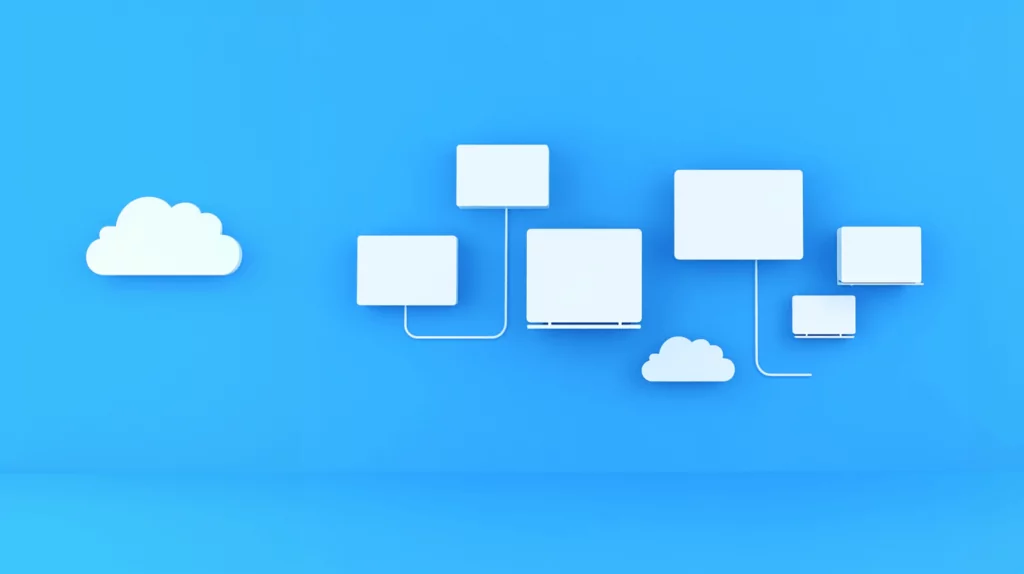Business agility is the ability to adapt constantly in a dynamic digital market, in order to maintain a competitive edge. The concept takes on a new, broader meaning in this era of increased cyber threats, a shifting remote/hybrid/on-site workforce landscape, and ever-changing customer demands. The foundation of business agility is ensuring the availability of critical operations and internal and external services at all times via IT resilience.
The Importance and Meaning of IT Resilience
IT resilience focuses on making all critical IT assets and their connected services and processes available and protected from disruptions at all times. In our digital era, IT resilience is the foundation of business continuity and a business’s ability to keep its processes and systems up and running. As such, it’s the basis of business continuity and disaster recovery (BCDR) planning.
Table of Contents
ToggleThe challenge for organizations in this realm is that IT infrastructure, devices, data, applications, workloads, and their dependencies are constantly changing. Take cloud adoption as an example. Multicloud and hybrid cloud adoption has reached 80% percent among nearly 800 survey responding organizations, according to the Flexera 2022 State of the Cloud Report. It would be reasonable to expect the remaining 20% to adopt cloud technologies in the coming years, and for hybrid cloud companies to go cloud native. Digital transformation such as this is a planned disruption, but its effects can still cause major disturbances if not well managed. This is equally true with other digital changes, such as data center consolidation and even seemingly simple system upgrades and maintenance.
Beyond digital transformation, IT resilience helps organizations weather changes and thrive during diverse kinds of disruptive events. While the COVID-19 pandemic was an unplanned IT resilience wake-up call for every business, mergers and acquisitions (M&A) are an example of an increasingly common planned business disruption.
IT resilience enables organizations to be ready for any form of disruption and to avoid downtime that can result in risks to the business, operations, data, the brand, and the bottom line.
IT Resilience Strategy Development
Some organizations lack a clear picture of how IT resilience affects organizational or business resilience because there are so many possible causes of disruption. The majority of businesses see themselves as lacking an understanding of organizational resilience, according to the Deloitte 2022 Global Resilience Report.
There are many examples of where IT resilience is crucial in any organization, such as the network, servers, switches, and other IT assets, like endpoint devices. But it is the business’ applications, workloads, and databases that are the fundamental reason for maintaining IT resilience. These components are part of a holistic mesh whereby they are all necessary to ensure business continuity. Providing this continuity requires an understanding of the components of an IT resilience strategy, and the development of a strategy appropriate for the business in question.
This article will delve into the components of an effective IT resilience strategy, offer a detailed, step-by-step approach for developing an IT resilience strategy, and conclude by explaining the role of dependency mapping in this process.
Components of an IT Resilience Strategy
An IT resilience strategy must have contingencies for three specific areas: high availability (HA,) workload mobility, and hybrid multicloud agility.
IT Resilience vs. High Availability
IT resilience and HA are sometimes confused as being the same as one another, but they in fact differ in a way that is important to understand. IT resilience encompasses both network level resilience (physical and control-plane topology redundancy,) and system level resilience (device-level redundancy and failover.) The third important aspect of IT resilience is operational resilience, which addresses network management and any associated change management involving people, processes, and workflows, such as application updates.
HA goes farther by including failover processes for systems, applications, and the network. This includes elements such as rate limiting for bandwidth, security factors, management, and monitoring. These aspects of HA require device/hardware redundancy and protocols in order to avoid a single point of failure. This can apply to hardware redundancies like switches and power supplies. HA also includes important failover application layer protocols like Hot Standby Router Protocol (HSRP,) Virtual Router Redundancy Protocols (VRRP,) and OSPF.
Workload Mobility and Hybrid Cloud Agility
Workload mobility and hybrid multicloud agility are different from one another, but work together. Workload mobility refers to the ability to move applications, workloads, virtual machines (VMs,) servers, and data across platform-dependent environments. This can be within an on-premises data center, a private cloud, or multiple public cloud environments, which if taken together make up a hybrid multicloud approach. Migration is part of a broader context whereby mobility can occur within a data center or between data centers. It can also refer to mobility from a data center to a private or public cloud, or the reverse.
Workloads are constantly changing in every organization, so determining where they should reside for best access, security, and resilience requires a highly agile hybrid multicloud approach. Understanding how these environments and workloads interact enables organizations to observe how IT and business resilience, business continuity, and disaster recovery (BCDR) work together holistically.
IT System Resilience and BCDR
Terms such as IT resilience, system resilience, and BCDR can blur together into a dense fog without a clear connection to business outcomes. Organizations can avoid this by first defining business outcomes as service/process downtime prevention coupled with service/process downtime recovery. A clear view then emerges of how these terms refer to four distinct elements that contribute to a single, holistic approach. These terms deserve a closer look in order to differentiate and define them properly.
IT Resilience vs. Disaster Recovery
While resilience focuses on prevention of failure, disaster recovery (DR) deals with recovery after an event. A comprehensive disaster recovery plan supports IT resilience by delivering a constant and repeatable middleware approach to recovery. This ensures that workloads are quickly available after a disaster that results in downtime. DR must also be agile and adapt to changing workload needs, acting like a web that connects to IT and business resilience.
Business Resilience and Business Continuity
Business resilience and business continuity planning share a broader goal of ensuring that systems which drive services and processes are always available. Business continuity is driven by processes, whereas business resilience focuses on the integration of crisis survival strategy into business culture. In this context, IT resilience is an essential component, but far from the sole means of ensuring business strength, agility, and competitiveness in the face of challenges and changes.
Developing an IT Resilience Strategy
Developing a successful IT resilient strategy starts with defining the essential services and processes (internal and customer facing) that are fundamental to the business’s mission. These all run through and between on-premises data centers and networks, as well as public and private clouds. This section will offer a step-by-step guide to the process of developing an IT resilience strategy.
Identify Essential Services
Everything from virtual and physical system architectures to IT assets like endpoint devices, applications, workloads, databases, and their dependencies are deployed in order to maintain vital services. Determining which services and processes are essential to the business is always based on various factors:
- The business mission within and across units, divisions, and sectors
- A vision of how the organization will accomplish that mission
- Strategies that determine the series of ways the business will use the mission to achieve that vision
The resulting list of services and processes required to achieve the mission and vision will often reveal that while some services are mission critical, others are secondary and non-critical.
Connect Services and Processes to IT Assets via Mapping
Next, a business must define how both essential and secondary services and processes connect to IT assets. This requires a highly accurate and agile IT infrastructure and application discovery and dependency mapping solution, like Faddom.
Identify Weaknesses and Ways to Improve Resiliency
Since IT assets—including system architecture, devices, applications, databases, and workloads—are constantly changing, the aforementioned mapping process must be continually and regularly updated (quarterly to monthly.) This becomes the single source of truth for all services and processes. It can then inform and drive identification of IT resilience weaknesses, facilitating the evaluation of mission-based changes while supporting the foundation of an IT resilience strategy.
Identify Supporting People, Processes, and Infrastructure
The next mapping step is to connect those previously mapped services, processes, and IT assets to the on-premises and remote workforce across departments. SMEs and distributed enterprises will need to map connections across regional or global divisions and sectors, and will now have a comprehensive list of services and processes ranked by whether they are critical, secondary, or non-critical.
Next, a business must determine the impact of failure/downtime. Many facets of loss must be assessed, from lost income and the recovery process’ downtime duration to the costs for the brand and business’ reputation. If the possibility of data loss and theft exists, long-term damages and regulatory fines should be included as risks.
Determine Effects of Failures
According to the Uptime Institute 2022 Annual Outage Analysis Report, over 60% of outages resulted in a loss of $100,000 or more—up from 39% in the previous survey. Evidently, organizations must seek weak links and potential points of failure proactively. Armed with this information, they can strengthen weak points when determining the impact of failures, and respond both proactively and reactively when necessary.
This is where an IT resilience strategy connects to—and informs—the BCDR strategy. IT resilience, business resilience, BC, and DR are all part of an IT resilience strategy, and the organization now has a blueprint that shows their connections and interdependencies—and, importantly, any weaknesses.
Examine How Real Time Asset Views Drive Governance
This last step in the IT resilience strategy is the most demanding in two ways: firstly, in terms of implementing redundancy across points of failure, and secondly, in choosing and implementing the broader BCDR plan and tools that ensure the business comes as close as possible to achieving 100% uptime.
Successful organizations understand that IT resilience is as much about governance as it is about the specific tools and platforms that provide BCDR across a hybrid, multicloud environment. Setting up good system governance allows the organization to respond to changing needs within the marketplace and enact change management internally. It also enables an agile and accurate response to the unforeseen disasters, such as geopolitical changes and instabilities.
An ideal IT resilience strategy is both highly detailed in scope and agile in practice, allowing an organization to respond proactively and reactively. This is why IT resilience is the foundation for organizational health, growth, and competitiveness through all possible changes.
The Role of Application Dependency Mapping in IT Resilience

An IT resilience strategy relies on having a complete picture of every physical and virtual IT asset and workload across all environments. This includes the ability both to see and to map all systems, assets, and workload interdependencies in real time.
Without the right application dependency mapping tool, it’s impossible to develop an optimally responsive and effective IT resilience strategy. To see how Faddom helps organizations to ensure IT resiliency, just start a free trial today!









